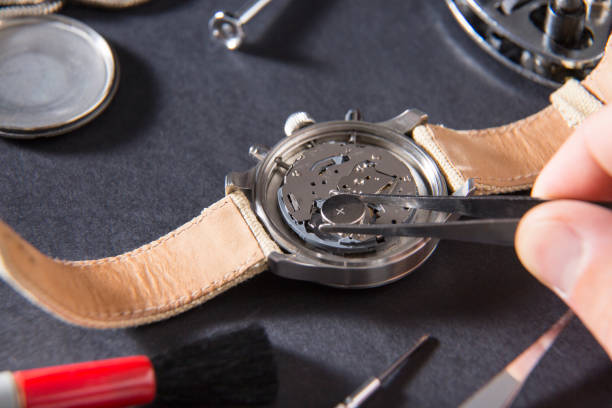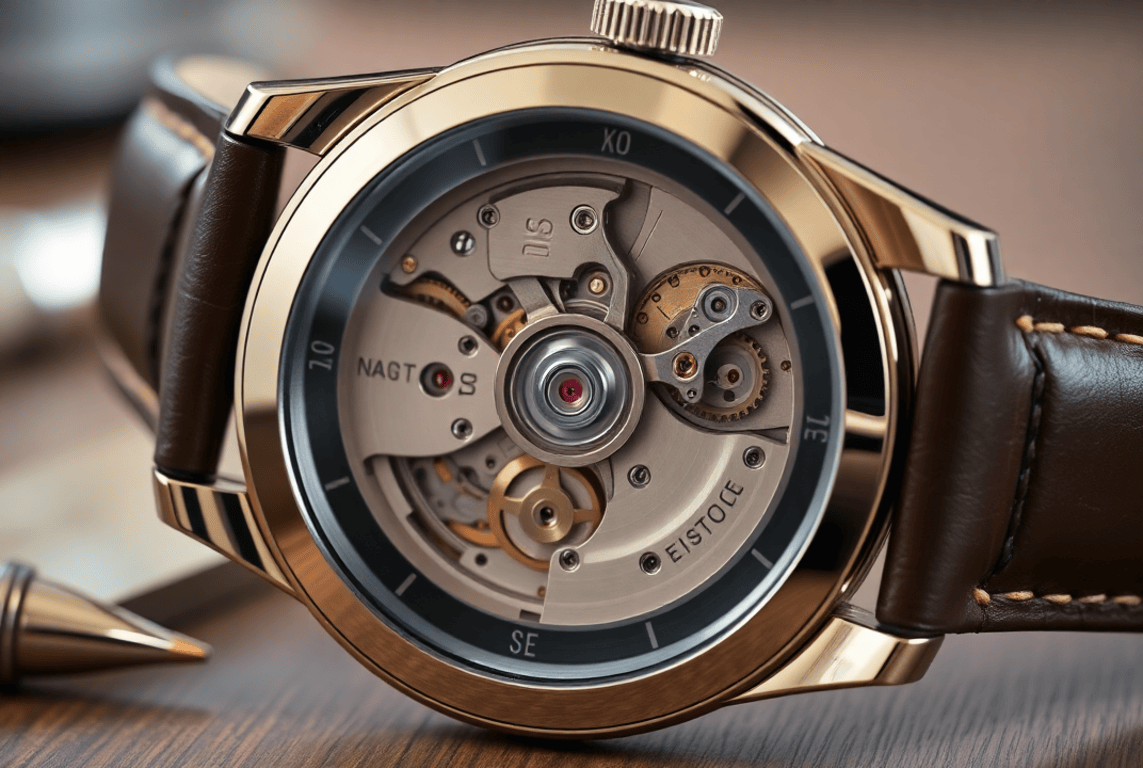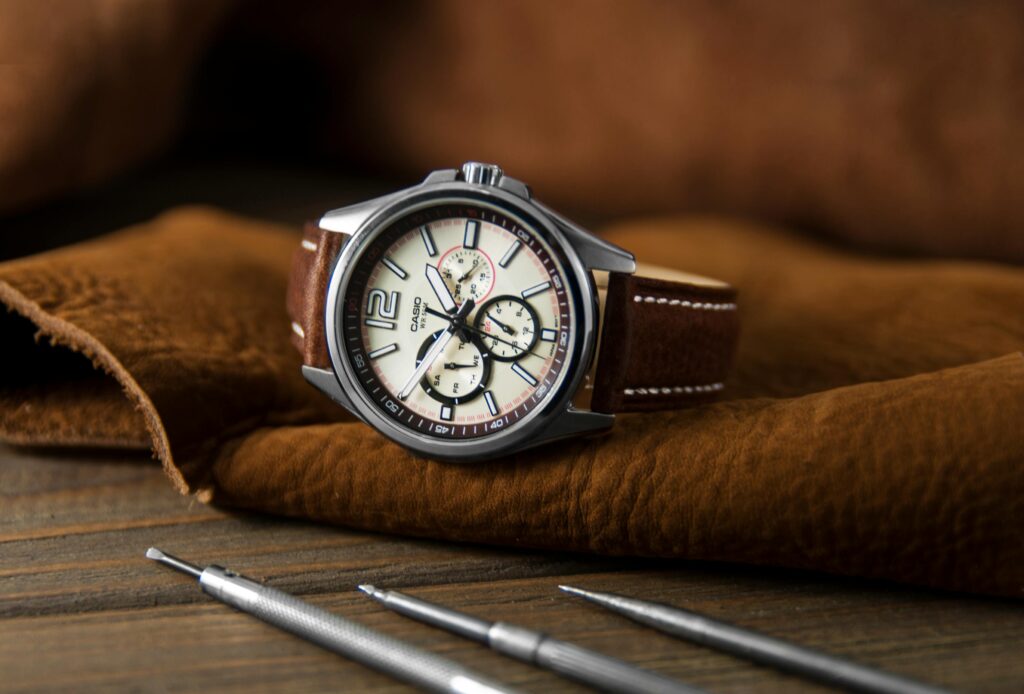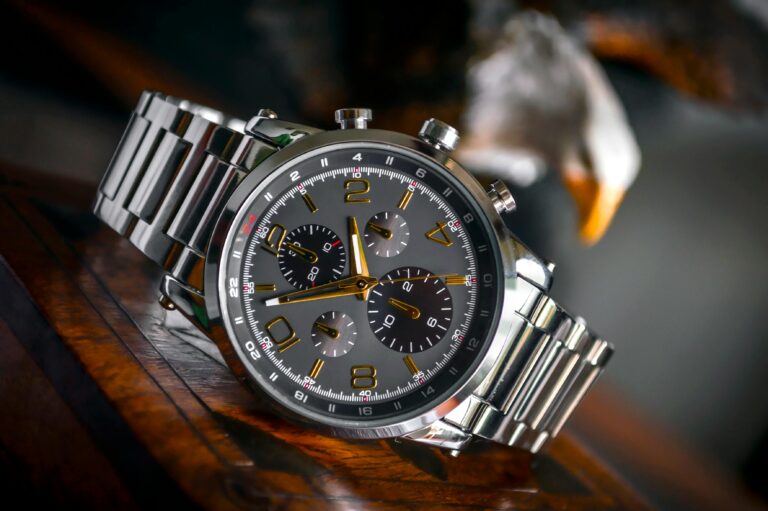When shopping for a timepiece, one of the most important—and often confusing—decisions you’ll face is choosing the right watch movement. Whether you’re a seasoned collector or buying your first luxury watch, understanding the differences between automatic vs. quartz vs. manual movements is essential. Each type offers unique benefits in terms of accuracy, maintenance, craftsmanship, and price. In this guide, we’ll break down the pros and cons of each movement type to help you make an informed decision—and find the perfect luxury watch for your lifestyle.
What Is a Watch Movement?
A watch movement, also known as a caliber, is the engine that powers a timepiece. It’s the mechanism that drives the hands and any additional complications like date displays or chronographs. The three primary types of movements are quartz, automatic (self-winding), and manual (hand-wound). Let’s explore each in detail.
1. Quartz Movements: Precision, Affordability, and Low Maintenance
How It Works:
Quartz watches are powered by a battery. An electronic oscillator regulated by a quartz crystal keeps time with remarkable accuracy. When the battery sends an electrical current through the crystal, it vibrates at a precise frequency—32,768 times per second—which drives the motor to move the watch hands.
Pros:
- High Accuracy: Quartz watches typically lose or gain only a few seconds per month, making them the most accurate of the three types.
- Low Maintenance: No winding required—just replace the battery every 1–5 years.
- Affordable: Quartz movements are mass-produced, making them significantly cheaper than mechanical alternatives.
- Durable: Fewer moving parts mean less susceptibility to shock and wear.
Cons:
- Less “Prestige”: Watch enthusiasts often view quartz as less artisanal compared to mechanical movements.
- Battery Dependency: You’ll eventually need to replace the battery, and improper disposal can harm the environment.
- Lack of Craftsmanship: Quartz movements are engineered for efficiency, not artistry.
Best For: Everyday wearers who prioritize accuracy, convenience, and value. Brands like Casio, Citizen, and Seiko offer excellent quartz options.

2. Automatic (Self-Winding) Movements: The Best of Mechanical Engineering
How It Works:
Automatic watches are mechanical but don’t require manual winding. Instead, they harness the natural motion of your wrist. A weighted rotor inside the watch spins as you move, winding the mainspring and storing energy. This stored energy powers the movement for typically 40–80 hours (known as the power reserve).
Pros:
- No Daily Winding Needed: As long as you wear it regularly, it keeps running.
- Craftsmanship & Heritage: Automatic movements showcase intricate engineering and are often visible through exhibition casebacks.
- Longevity: With proper servicing every 3–5 years, automatic watches can last generations.
- Smooth Sweeping Second Hand: Unlike the ticking motion of quartz, automatics have a fluid, elegant sweep.
Cons:
- Less Accurate Than Quartz: May gain or lose a few seconds per day.
- Higher Cost: More complex mechanics mean higher prices.
- Requires Motion: If not worn for a couple of days, it will stop and need resetting.
- Thicker Case: The rotor mechanism adds bulk compared to manual or quartz watches.
Best For: Watch lovers who appreciate horological artistry and wear their timepiece daily. Popular automatic brands include Rolex, Omega, Seiko 5, and Tissot.

3. Manual (Hand-Wound) Movements: Tradition Meets Intentionality
How It Works:
Manual watches are the oldest type of mechanical movement. They require the wearer to wind the crown daily or every other day to tighten the mainspring, which then slowly releases energy to power the watch.
Pros:
- Slimmer Profile: Without a rotor, manual watches are often thinner and more elegant.
- Historical Significance: Many vintage and high-end dress watches use manual movements.
- Ritual & Connection: Winding your watch daily creates a personal bond with your timepiece.
- Service Simplicity: Fewer moving parts than automatics can mean easier servicing.
Cons:
- Daily Winding Required: Forget to wind it, and it stops.
- Shorter Power Reserve: Typically 36–48 hours, though some modern calibers exceed 7 days.
- Less Convenient: Not ideal for those who rotate multiple watches or want “set-and-forget” reliability.
Best For: Collectors, vintage enthusiasts, and those who value tradition and minimalism. Brands like Jaeger-LeCoultre, Patek Philippe, and Nomos Glashütte excel in manual movements.

Automatic vs. Quartz vs. Manual: A Quick Comparison
| eature | Quartz | Automatic | Manual |
|---|---|---|---|
| Power Source | Battery | Wrist movement | Hand-wound |
| Accuracy | Very high | Moderate | Moderate |
| Maintenance | Low | Medium | High |
| Lifespan | Long (battery changes) | Very long (with servicing) | Very long (with servicing) |
| Cost | Affordable | Mid to high range | High-end luxury |
| User Interaction | Minimal | Moderate | High (daily winding) |
| Collector Appeal | Low | High | Very high |
Which Movement Is Right for You?
Ask yourself these questions:
- Do you value precision above all? → Choose quartz.
- Do you wear a watch daily and appreciate engineering? → Go automatic.
- Do you enjoy ritual and own a collection of timepieces? → Consider manual.
Many watch lovers own examples of all three types—using quartz for sports or travel, automatics for daily wear, and manuals for special occasions.
Hybrid & Smart Options
While not traditional, solar-powered quartz (like Citizen Eco-Drive) and kinetic (Seiko’s automatic-charging quartz) offer eco-friendly alternatives. Meanwhile, smartwatches use digital movements but lack the heritage and longevity of mechanical or quartz analogs.
Final Thoughts
Understanding automatic vs. quartz vs. manual watch movements empowers you to choose a timepiece that aligns with your lifestyle, values, and aesthetic preferences. Whether you’re drawn to the precision of quartz, the convenience of automatic, or the tradition of manual winding, there’s a perfect movement out there for you.
Whether you’re exploring pre-owned luxury men’s watches, building your first collection, or upgrading your everyday wristwear, your choice of movement defines more than just time — it reflects your personality, lifestyle, and appreciation for craftsmanship.






Leave a Comment